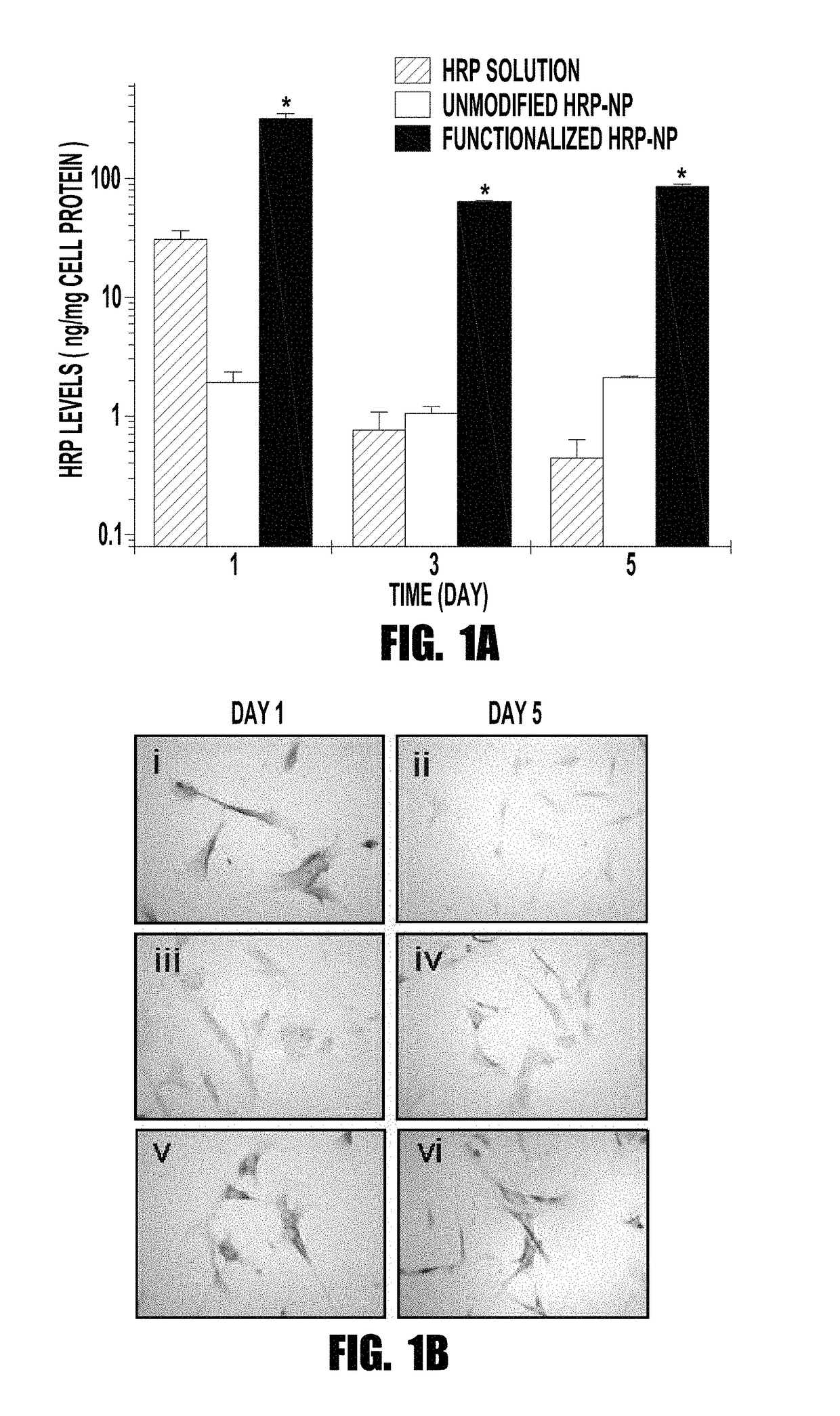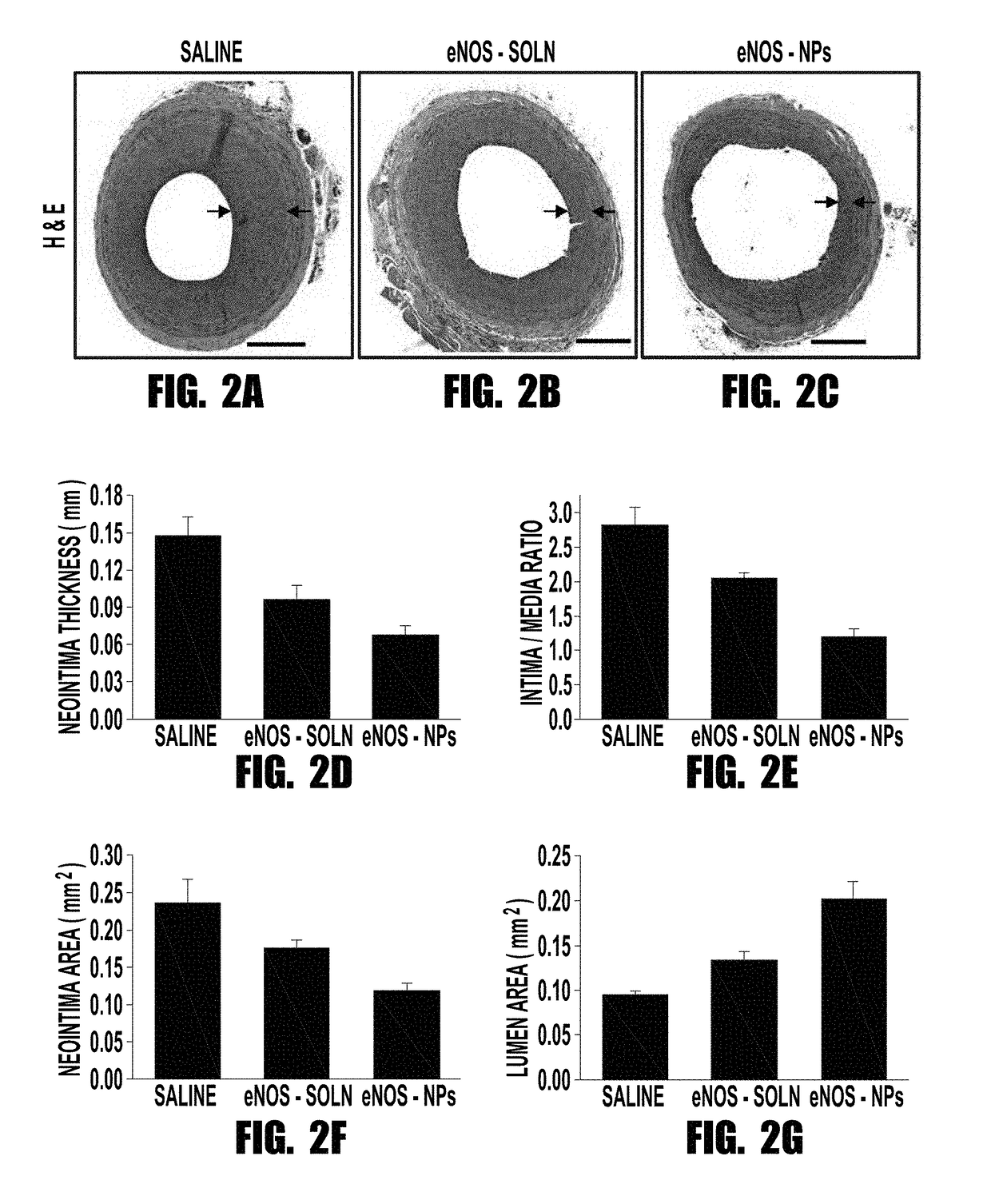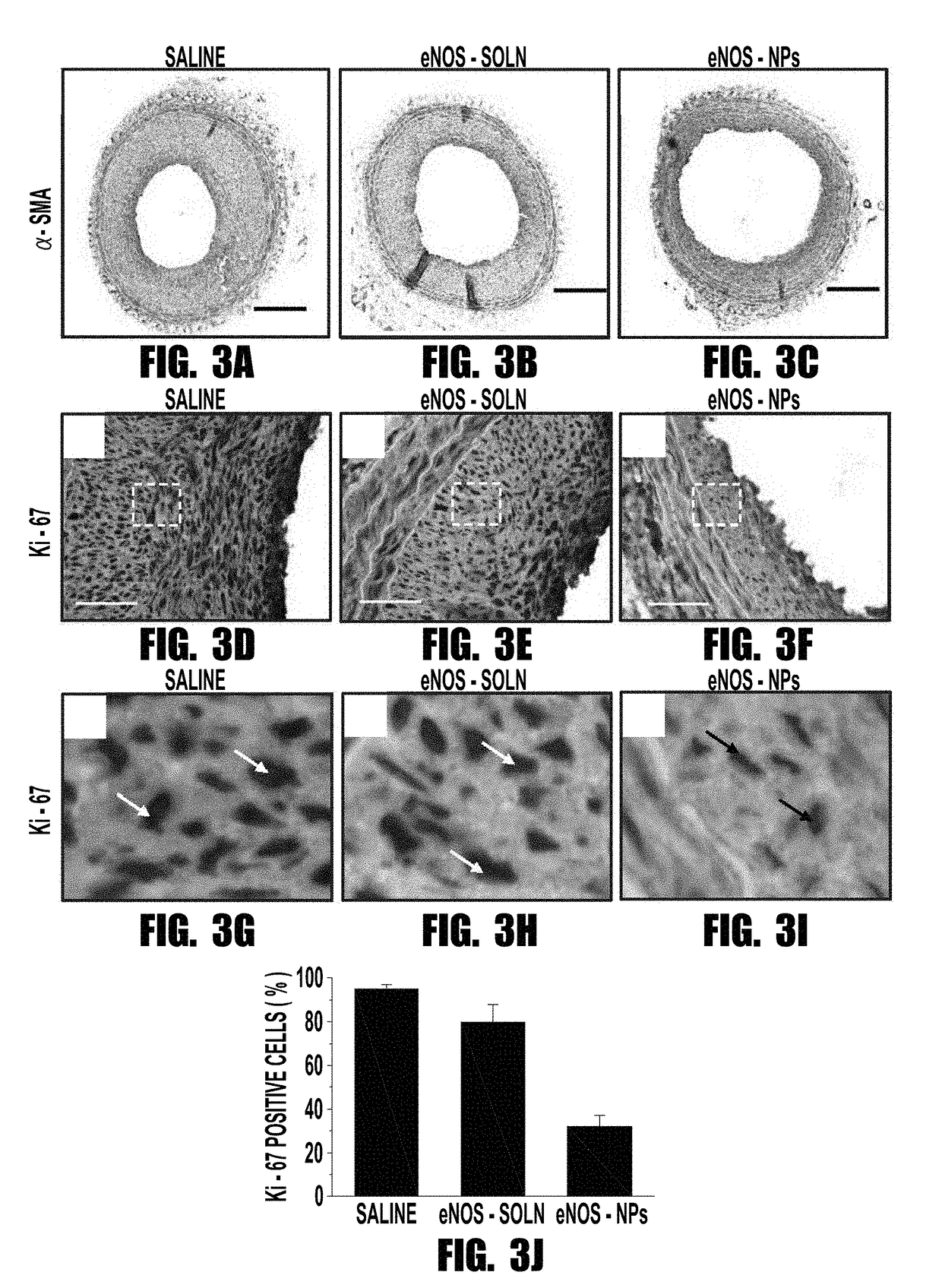Nitric oxide synthase nanoparticles for treatment of vascular disease
- Summary
- Abstract
- Description
- Claims
- Application Information
AI Technical Summary
Benefits of technology
Problems solved by technology
Method used
Image
Examples
example 1
cle-Mediated eNOS Protein Therapy to Inhibit Post-Angioplasty Hyperplasia in Rat Model of Vascular Injury
[0058]Endothelium is responsible for producing the vasoprotective enzyme, endothelial nitric oxide synthase (eNOS), which produces nitric oxide (NO). NO regulates vascular tone, prevents thrombogenicity, and maintains vascular smooth muscle cells (VSMCs) in a quiescent state. Vascular interventions such as balloon angioplasty or stenting result in denudation of endothelium, causing vascular deficiency of NO that leads to migration and proliferation of VSMCs, thus causing intimal hyperplasia. The inventors tested the hypothesis that localized and sustained delivery of recombinant eNOS protein would augment NO synthesis in the target artery and thereby inhibit the post-angioplasty hyperplasia. Functionalized biodegradable nanoparticles, designed to enhance cellular uptake and arterial localization, and release the encapsulated protein in active form, were used to deliver eNOS prote...
example 2
for Coating a Stent and Balloon with Nanoparticles
[0093]Nanoparticles containing bovine serum albumin (BSA) as a model protein and SDB5700 dye as a near-infrared (NIR) marker were formulated with 1.32 d l / g poly dl-lactide co-glycolide (PLGA) polymer using a double emulsion technique. Aqueous BSA solution at a concentration of 1 mg / 15 μl was emulsified into a 15.25 mg / ml solution of PLGA in chloroform containing 16.7 μl of SDB5700 NIR dye. Emulsification was performed using a probe sonicator (55 W for 2 minutes in an ice bath; Sonicator XL, Misonix, Farmingdale, N.Y.). The primary emulsion was then added to 4 ml of an aqueous solution of the emulsifier poly (vinyl alcohol) (PVA) and the surface charge modulatory poly-L-lysine (PLL) (PVA to PLL ratio 2 to 0.5 w / w). The mixture was then vortexed for 3 minutes and then sonicated as above for 5 minutes to form a double water-in-oil-in-water emulsion. The double emulsion was then centrifuged for 10 minutes at 1,000 rpm and the top layer ...
PUM
| Property | Measurement | Unit |
|---|---|---|
| Diameter | aaaaa | aaaaa |
| Biocompatibility | aaaaa | aaaaa |
Abstract
Description
Claims
Application Information
 Login to View More
Login to View More - R&D
- Intellectual Property
- Life Sciences
- Materials
- Tech Scout
- Unparalleled Data Quality
- Higher Quality Content
- 60% Fewer Hallucinations
Browse by: Latest US Patents, China's latest patents, Technical Efficacy Thesaurus, Application Domain, Technology Topic, Popular Technical Reports.
© 2025 PatSnap. All rights reserved.Legal|Privacy policy|Modern Slavery Act Transparency Statement|Sitemap|About US| Contact US: help@patsnap.com



